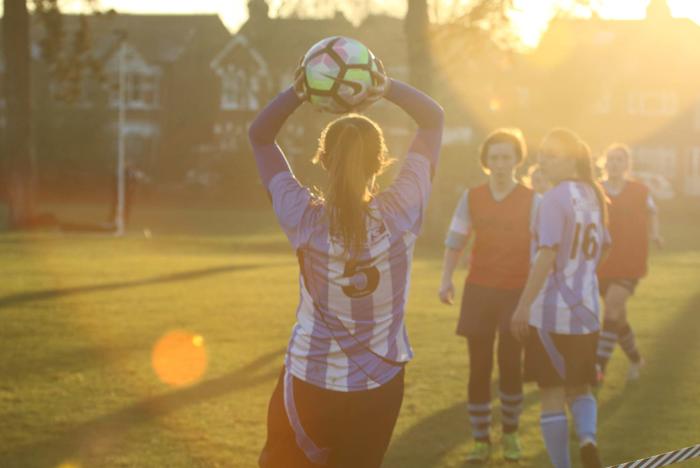
New research published today by Dr Katrine Okholm Kryger, Sport Rehabilitation academic at St Mary’s University, Twickenham, has found that female footballers are being left behind in sports technology.
The study, published in the Sports Engineering journal ahead of the 2022 Men’s Football World Cup, features input from a global team of academics, practitioners and England Women’s National Team Captain Leah Williamson, express that women football players require specifically tailored products such as kit, boots, and balls to optimise their performance and safety on the pitch.
The authors conclude that, while some progress has been made in addressing the equipment requirements of female players, essential gaps in research, development, and production remain in women’s football.
Although the popularity of professional women’s football has increased in many countries, highlighted by England’s recent win in 2022 UEFA European Women’s Football Championships, technology and equipment are still largely designed for men’s football. Notably, a recent review identified only 32 published scientific articles on technology in women’s football.
Speaking of the study, Dr Okholm Kryger said, “With the help of an amazing group of applied and scientific experts in women’s football and technology, we try to highlight the progress made so far but also the sports technology challenges we still face in women’s football. We have already designed a kit tailored for women and hijabs that align with the rules of the game.
“However, we lack attention to areas such as football boots, tracking devices, pitch conditions and the fact that women do not like playing in light coloured shorts due to the fear of visible leakage when players are on their period. We are very pleased that Sport Engineering invited us to contribute with the paper and hope to firstly start a discussion about equality in football equipment but also to kindly nudge manufacturers and research towards to the need to more attention is this area.”
Dr Okholm Kryger and the co-authors used the study to pose ten questions to highlight the minimal progress made in elite women’s football technology, and the barriers to making bespoke equipment available to women players that still remain.
The authors discuss why tailored technology for women football players is necessary and highlight that although women have different physical needs than men, equipment such as football boots and balls continue to be designed for men rather than women. These issues can both increase the risk of injury from ill-fitting boots and reduce performance due to the proportionally greater effort required to kick the ball compared to men.
Additionally, the authors report that many women footballers feel uncomfortable while wearing football shorts (which are typically white) due to concerns about possible menstrual leaks. Professional women football players are also often obliged to wear specific sports bras supplied by kit sponsors, rather than the optimum sports bra for their physique. This can also reduce performance and lead to discomfort while running and turning.
The authors note that manufacturers are acknowledging the lack of development in women’s football technology and there is a positive shift towards women-specific products. However, advances are limited by the lack of existing research, and a concerted effort is needed to address essential gaps in the understanding of the needs of women football players.
Media enquiries
For media enquiries, please contact:

Press team
020 8240 8262